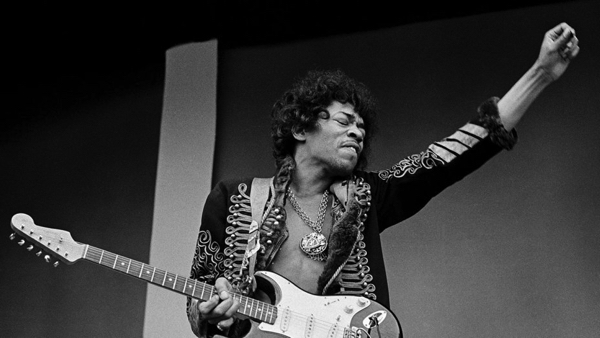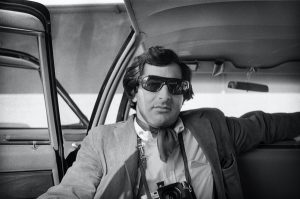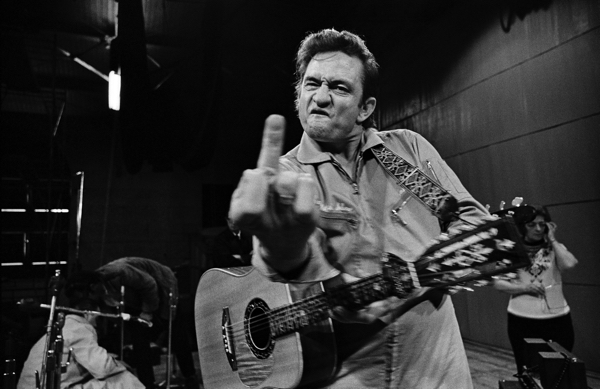
Dir: Alfred George Bailey | With: Amelia Davis, Anton Corbijn, Michael Douglas, Bruce Talaman, Michelle Marghetts | Editor: Adam Biskupski | US Doc
“Jim Marshall held up a mirror to a white hot era that will never come again”. B Talaman
George Bailey’s immersive documentary tells the story of the photographer behind some of the music industry’s most evocative images. Jim Marshall was a true maverick who elevated some of music’s lesser known players to star status with his inspired professional shots. And naturally HE snapped the greats: Bob Dylan, Jimi Hendrix, Miles Davis, Dinah Washington and John Coltrane all trusted him to join them on stage where he created some of the most enduring black and white images of the 20th century. He also captured The Beatles fated last concert at Candlestick Park in August 1966.

Copyright Jim Marshall Photography LLC On Tour with the Mamas and Papas 1967
Marshall (left) never left home without his Leica camera strung over his shoulder. But he was also a self-destructive man who could be his own worse enemy. He even served time for his occasional use of guns. Cars and cameras were also the lifetime obsession of this ebullient guy with a magnetic personality who was also described as a “little malevolent gnome” by Sicilian writer Michelle Marghetts who would become his girlfriend, and goes on to share some of the most salient revelations in this enjoyable biopic.
Born into an immigrant family in 1930s Chicago, James Joseph Marshall was of Syrian Catholic origin – according to Michael Douglas who got to know him on The Streets of San Francisco series and who is one of the film’s most insightful talking heads. Another is Amelia Davis, his assistant for a dozen years until his death in 2010. According to her Marshall sniffed more cocaine than the Rolling Stones when he joined them for a Life magazine shoot. He communicated with her through scrawled notes pinned to his front door, these became the barometer of his psychological state – “no work today Davis”. Close to Marjorie, his mother, Jim had a troubled relationship with his distant, womanising father, who left when he was 10 and died when he was 15. Jim remembers him making a delicious pancake one day, and then bashing Jim’s head against the table the next, knocking two teeth out.
Rather like its acid-tripping subject, the biopic flips backward and forward to highlight different phases of Marshall’s career. After an early time in New York’s early 1960s, where he became close to Bob Dylan, Marshall moved to San Francisco in the thick of the Haight-Ashbury era for the Summer of Love, and stayed there. A consummate professional he was proud of his talents: “people think they can copy my pictures, but it’s taken me half my life (to learn how) to do them” He captured impromptu moments in turbulent careers, but had to work hard to win his subjects over – Miles Davis is seen relaxing; Coltrane is pictured as “a quiet genius”.

Johnny Cash flipping the bird at San Quentin Prison 1969. Copyright Jim Marshall Photography LLC
Other famous photographers also join the fray: Bruce Talaman explains Jim’s lensing style, and Anton Corbijn posits: “no matter how good you are, if you don’t have the access, you don’t have the pic.” “People trusted Jim, but not immediately” says Graham Nash — who went to LA and never came back.
But it wasn’t just the guns and drugs that saw Marshall’s glittering career crash from the starry rock n roll firmament. There were outside reasons. Stars became more aware of their fame, and employed people to guard it: those famous PRs who often stand in the middle of artists and those that chronicle them.
Show Me the Picture is a fascinating snapshot of the jazz, soul and rock n roll era showcasing a brief moment in time “when you could still say and do what you wanted before the world became controlled and politically correct”. The final act covers Marshall’s efforts to document the ‘Peace’ symbol. Clearly he had a highly inventive mind and an inquiring one. He also stressed the need for artists to hold on to their copyright at all costs, a wise step that bankrolled his life even after his commissions dwindled and left something tangible for Davis. Show Me the Picture jumps around bit like its acid-tipping subject – but for aficionados of rock and roll, jazz and soul of the 1960s onwards, it’s an hour and a half of unmitigated bliss. MT
ON RELEASE FROM 31 JANUARY 2020